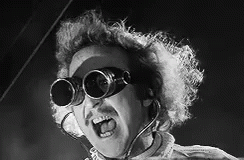Quick update: The big hole in the enclosure has been cut, and the heatsink and SSRs are mounted. I'm still waiting on the Deutsch connectors to arrive sometime next week. Just to keep me humble, the beer gods broke a tap in the last hole. Rrrrr.
I also received my order of glycol, so I fired up the chiller and filled the reservoir. I had a bit of a hiccup when I fired it up, though. The compressor is mounted on a lift-up lid that covers the reservoir. Apparently, when cleaning it out and filling it, some of the oil in the compressor got where it isn't supposed to go. When I started it, it would run for about 30 seconds, the bog down and shut off. A friend of mine is a retired gas passer (HVAC genius, actually), so I asked him to come over and look at it. In the six days between phone call and visit, everything must have settled, because it ran like a champ. The system pulled 11 gallons of glycol solution from 78F to 18.5F in about three hours.
Ultimately, I will wind up adding thermostatic control to the reservoir, because at 18.5F, I was getting condensate freezing up on the suction line all the way back to the compressor. I'll have to strike a balance once I see how well the system handles the heat load from the returning glycol solution.
I bought a
transmission cooler from Amazon that I am going to use as glycol solution loop to chill my fermentation chamber. I have a couple of 105 CFM muffin fans, so I'm going to build a plenum chamber on the hot side of the transmission cooler. I'll mount the fans to the plenum, which will force air across the coils. Again, it will take some tweaking, and maybe even a second coil, but I think it will work well. I'll also have to integrate a condensate drain of some kind.
The paths for these projects are starting to converge, and I'm getting pretty close to being done. My wife has been watching the work I've been putting in, and is happy that I've kept the rest of the chores around here up to date, so she dropped a little surprise on me yesterday...A couple of stainless steel work tables she picked up on the cheap from one of her clients. The larger is a standard countertop height, but the small one is much lower, putting anything on it at a really comfortable height to work on.











![Craft A Brew - Safale S-04 Dry Yeast - Fermentis - English Ale Dry Yeast - For English and American Ales and Hard Apple Ciders - Ingredients for Home Brewing - Beer Making Supplies - [1 Pack]](https://m.media-amazon.com/images/I/41fVGNh6JfL._SL500_.jpg)




































































